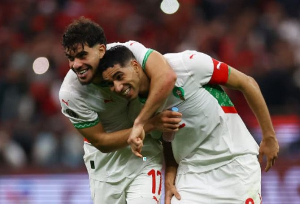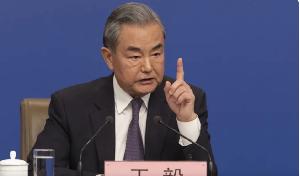Preamble
The intention of any good educational system is to give knowledge, skills and aptitude to all persons irrespective of their physical, socioeconomic, intellectual and geographical circumstances. Ghana’s Shared Growth and Development Agenda (2014) also support the provision of good quality education to all citizens towards national development.
Article 25 (a) of Ghana’s Constitution (1992), Education Act (2008) and Free Compulsory Universal Basic Education (FCUBE) programme stress on the need for a freely accessible and compulsory basic education to every citizen as the Education Act of 2008 also calls for prosecution of parents that deny their children an access to, at least, basic education. The FCUBE Report of 2012 indicates that the proportion of out-of-primary-school children fell to 18.3% but still with wide regional variations.
Meanwhile, available data show that the nation has made gains in the gross enrollment rates at the basic education level especially at kindergarten and primary level following the implementation of social intervention programmes, such as capitation grant, school feeding and free textbooks and free exercise books.
The Annual schools census of the Basic National Profile-School Year Data (2014/2015) of Ministry of Education (MoE) revealed a total of 8,034,705 pupil enrollment in , including creches, nurseries and kindergartens. This, notwithstanding, there still exists individuals in deprived and hard-to-reach communities who are out of school and who mostly indulge in menial jobs in farms and on streets for a living.
Ghana’s Population and Housing Census (2010) says 540,127 children from 6 to 14 years either dropped out of school or never entered school due to the remoteness of their schools from home, physical disabilities, and socioeconomic and emotional limitations.
Out-of-school children (OOSC) refer to persons who have attended school in the past and dropped out and those who have never attended. According to the UNICEF Out-of-School Report for Ghana (2013), 24% of children from 8 to 14 years in Northern Ghana are out of school.
Dr Stephen Adu of Ghana Education Service (GES) once opined that, “There are children who are out of school because of the remoteness and inaccessible nature of such communities. There are also communities which, even though, have schools, they record extremely low enrollment as a result of unfavorable socioeconomic and cultural factors.”
“Even though basic education is expected to be accessible to all Ghanaian children, it is unfortunate that we have over 400,000 out of school children in the country. We are denying all such children the opportunity for them to contribute their quota to the development of this our great nation”, he said. In order to expeditiously address inequality and inequity in the supply chain of educational services, MoE and GES have given their blessings and support to the Complementary Basic Education (CBE) programme through development and approval of a policy to guide the operation of CBE in the country;, a move which is consistent with the Education Strategic Plan (2010-2020) that mandates the state to attend to the educational needs of all children, including the vulnerable and excluded especially in hard to reach areas.
Development and implementing partners of CBE
But for the hard work of the United Kingdom Development for International Development (DFID) and US Agency for International Development (USAID) as well as non-state actors like School for Life, Ghana National Education Campaign Coalition, IBIS-Ghana, Ghana Institute of Languages, Literacy and Bible Translation, Northern Network for Education Development, Partners in Participatory Development, Roots and Futures, DANIDA and UNICEF that formed the CBE Alliance in 2011, CBE would have gone into extinction by now. The Ministry of Education and GES shall continue to be grateful to all of them.
It is motivating to overheard Jim McAlphine, Director for DFID Ghana, say, “UK’s development assistance in Ghana has been a strong focus on education helping Government to ensure that every Ghanaian child gets access to basic education; and I am pleased to be involved in our joint efforts at achieving this.”
Andy Karas, acting Mission Director for USAID/Ghana, also had these words to share, “We, at USAID/Ghana, are happy to have partnered with the Ministry of Education, Ghana Education Service, and DFID to put in hard work and dedication to make this collaboration come to fruition. As we all know, education in the early grades is directly linked to success later in life. Building strong foundational skills in reading will help children learn to read so that they can read to learn.”
The nature and aims of CBE
The aim of CBE is to support 200,000 OOSC (at least 50% of girls) from 2012 to 2018 by which time the partners will have succeeded in supporting Government and stakeholders to fully take over the management of the programme.
There are over 2,000 CBE learning centers in 46 districts in Northern, Upper East, Upper West, Brong Ahafo and parts of Ashanti regions serving OOSC from 8 to 14 years and persons in remote localities with basic life skills, literacy, and numeracy.
CBE is deemed to have met international best practices as countries like Burkina Faso, Mali, East Africa, Egypt, India and Bangladesh are also said to have bought into it, though, the programme operates purely on a community-based mode with a class size of usually not more than 25 learners.
In Ghana, CBE uses GES-approved instructional aids; it depends on local volunteers as facilitators to teach learners in their local languages to enable them enter grade 3 or grade 4 of primary education as guidance services are also given to retain learners in school.
Progress in achieving CBE outcomes and outputs
The crux of this write-up is to expose the progress which has been made so far on CBE. Records indicate CBE has lived with us unofficially for way over a decade.
Implementing partners inform that by the close of 2014/2015, 47,517 (representing 92.86%) out of 51,168 learners and 22,606 (92.60%) of 24,412 girls graduated from CBE and transitioned to primary schools, figures that exceeded a target of 70% in each case.
It has emerged that CBE achieved an overall reduction of OOSC of 13.92% and 11.3% for girls, moving beyond the target of 14.46% and 14.29% respectively by the end of 2014/2015.
CBE reached out to 98,959 OOSC in 2012/2013, 2013/2014 and 2014/2015 comprising 51,334 (51.87%) boys and 47,625 (48.13%) girls, exceeding the enrollment target of 90,000 as envisaged under the programme but falling short of the female target of 50%.
About 51,168 (93.57%) of the 54,682 children that were enrolled and 24,412 (94.04%) of the 25,959 girls enrolled completed the CBE course of study in 2014/2015, exceeding the target overall completion and girls’ completion rates of 85%.
A cumulative total of 4,105 facilitators with 671 (16.35%) females were recruited and trained for CBE in 2012/2013-2014/2015, exceeding a target of overall figure of 3,600 and 558 (15.5%) females envisaged under the programme by 505 and 113 respectively.
In 2014/2015, a total of 2,206 facilitators were engaged, of which 401 (18.18%) were females, also exceeding the programme’s target during the period.
A cumulative total of 3,941 school management and local committees with a total membership of 19,700, including 10,831 female members were formed as against the overall target of 3,600 committees with a total membership of 18,800 and 10,800 females in each of the school management and local committees.
In 2014/2015, a total of 1,912 committees with a membership of 9,810, including 5,585 females (56.93%) were formed with female membership falling short of the 60% target.
CBE instructional materials have been translated into an additional four new languages, giving a total of 12 languages with support from the Department of Languages of University of Education, Winneba and the Curriculum Research and Development Division of GES.
CBE has received the ministerial accent with the programme document having been distributed to relevant stakeholders for proper media advocacy and support in its implementation.
The Global Partnership for Education Ghana (GPEG) package provides financial support for CBE activities. Over 50% of implementing district education offices and district assemblies make budgetary allocations to cater for supply of pieces of furniture, instructional materials, classrooms for new classes in CBE communities and requisite facilities for integrating graduates of the CBE programme in the formal school.
Conclusion
The End of CBE Cycle Report (2015) of the Management Unit showed the programme has chalked good results in the expansion and improvement of infrastructure and instructional resources for learners in the participatory regions. The Sekyere Afram Plains in Ashanti Region; Masando, Banda, Kwame Brentim, Attakrom, Zamrama, Samai Congo, Kwaese, Romada Congo, Kpampo, Apaaso, Tindam, Atta Akura and Dondo Akura in Brong Ahafo; Lepusi, Zebaga, Zebega, Gbogdaa, Yibouri, Bebire and Mokeridugu at North; Sapooro and Sheaga in Upper East; and Dabilipuo and Kenkele in Upper West Region have been named and applauded for managing the programme well.
Aah, we wish we could get a slogan for CBE to make noise with right now but next time!
The writers are educationist/ Public Relations Officer and Development Partners’ Coordinator of the Ghana Education Service and Ministry of Education respectively
E-mail: amoatec27@yahoo.com and ernest7000@gmail.com
Regional News of Saturday, 28 May 2016
Source: Anthony Kwaku Amoah & Ernest Wesley-Otoo













